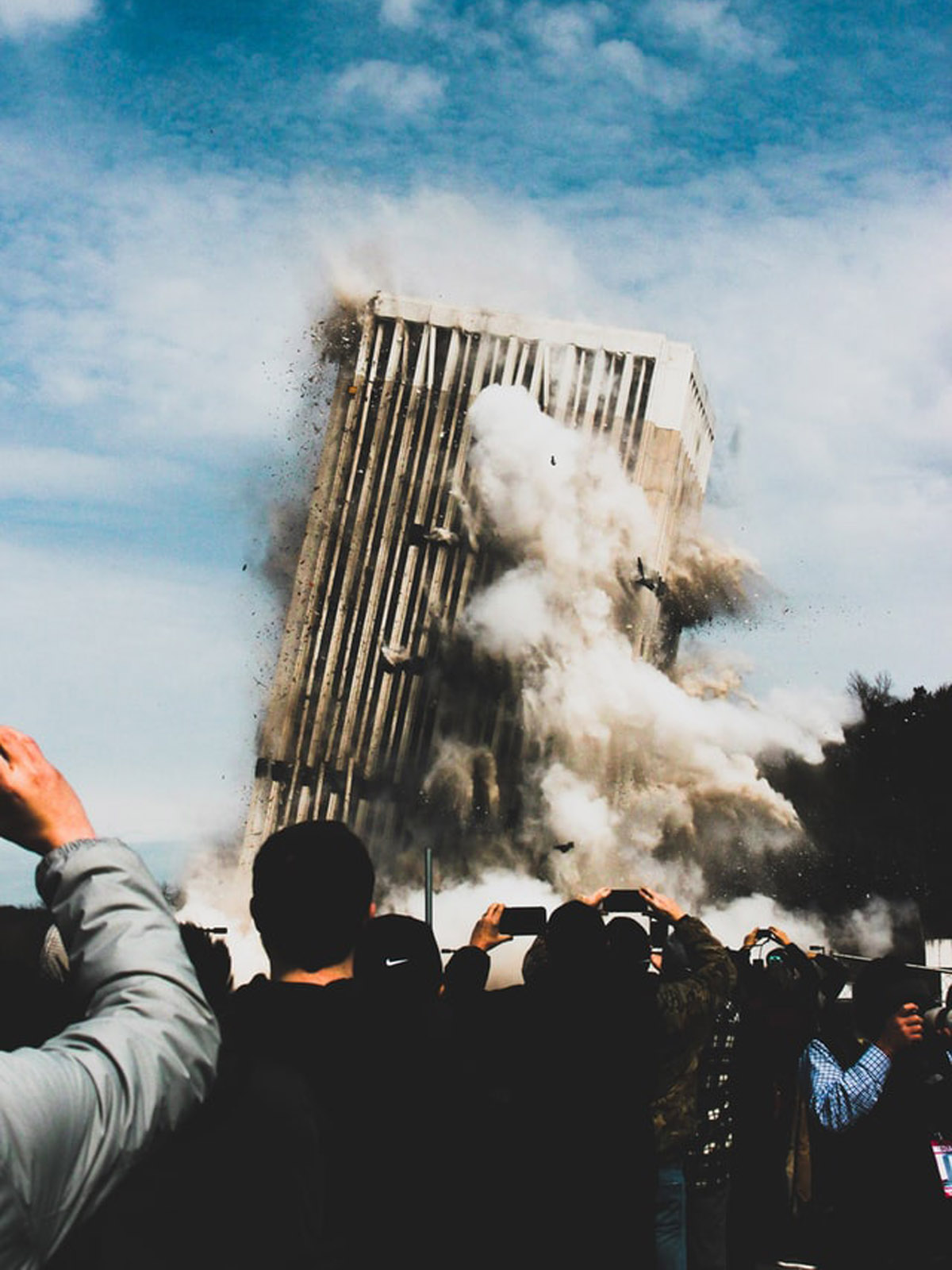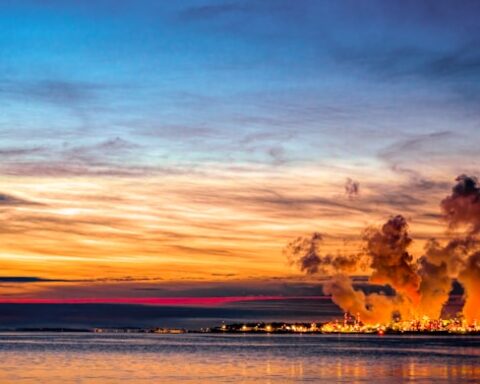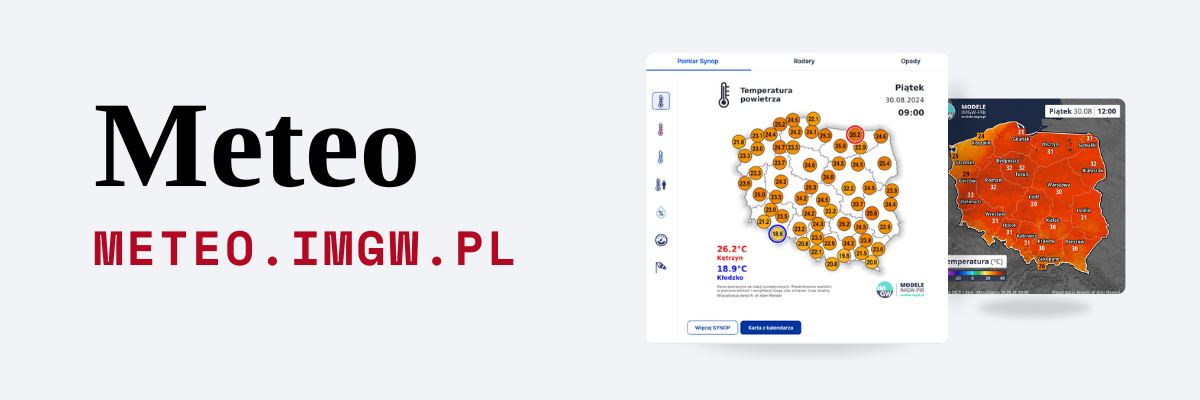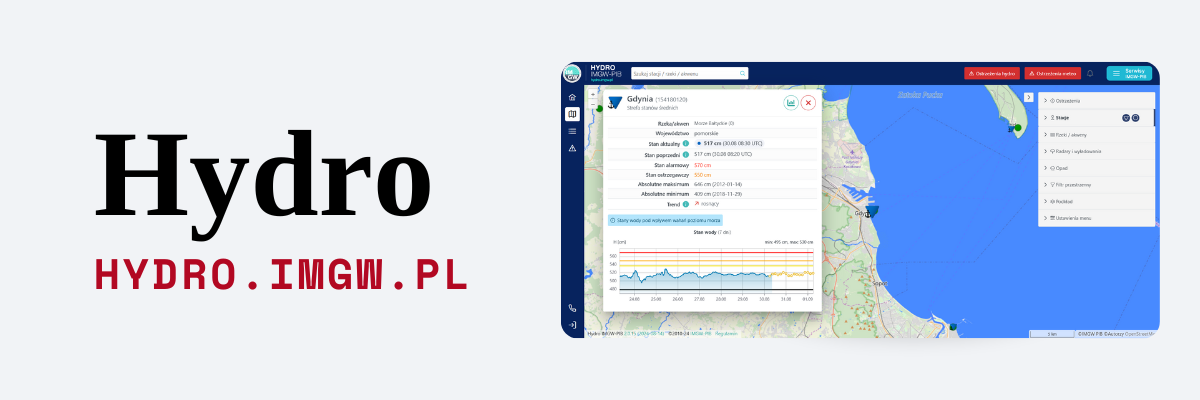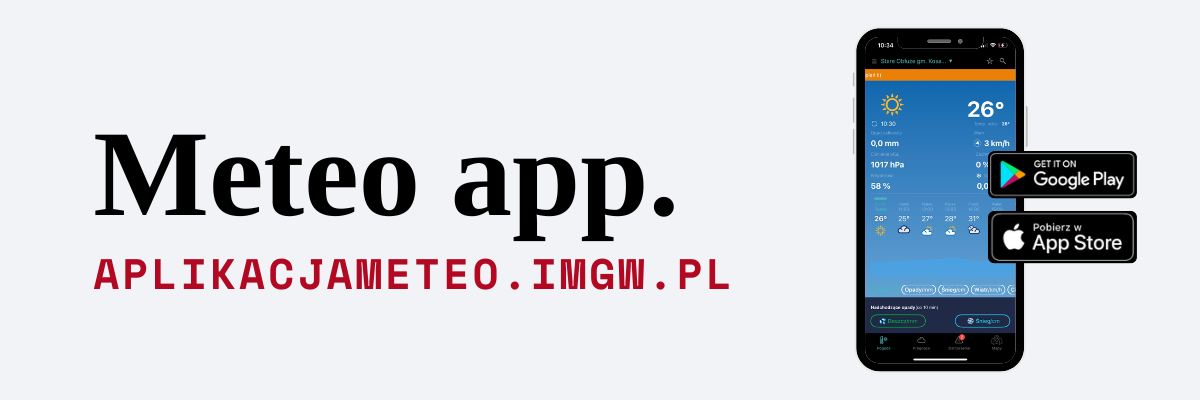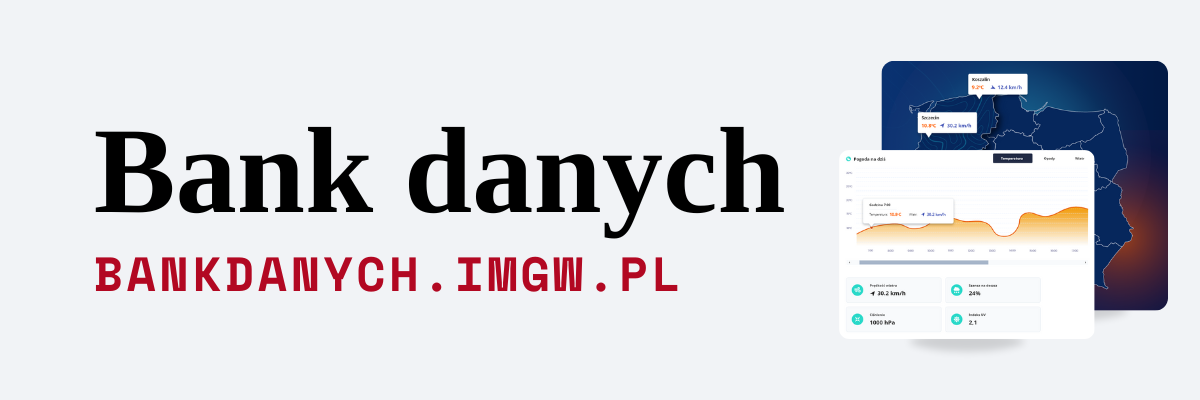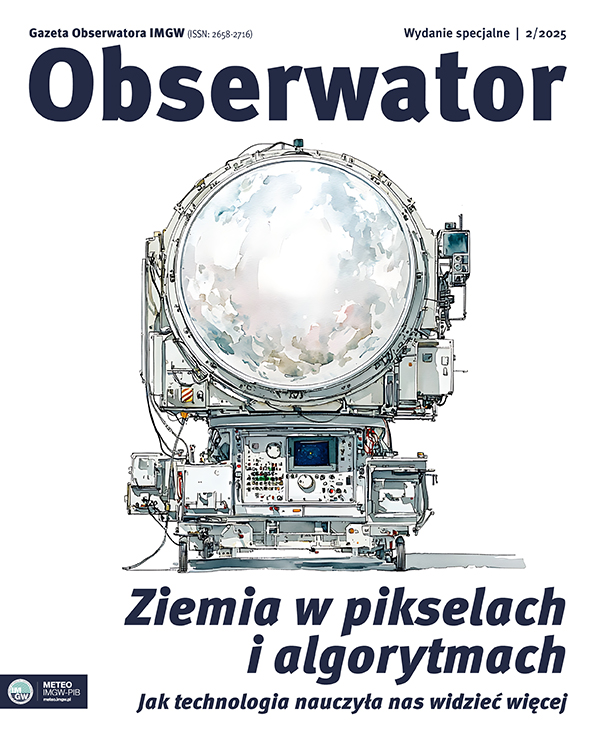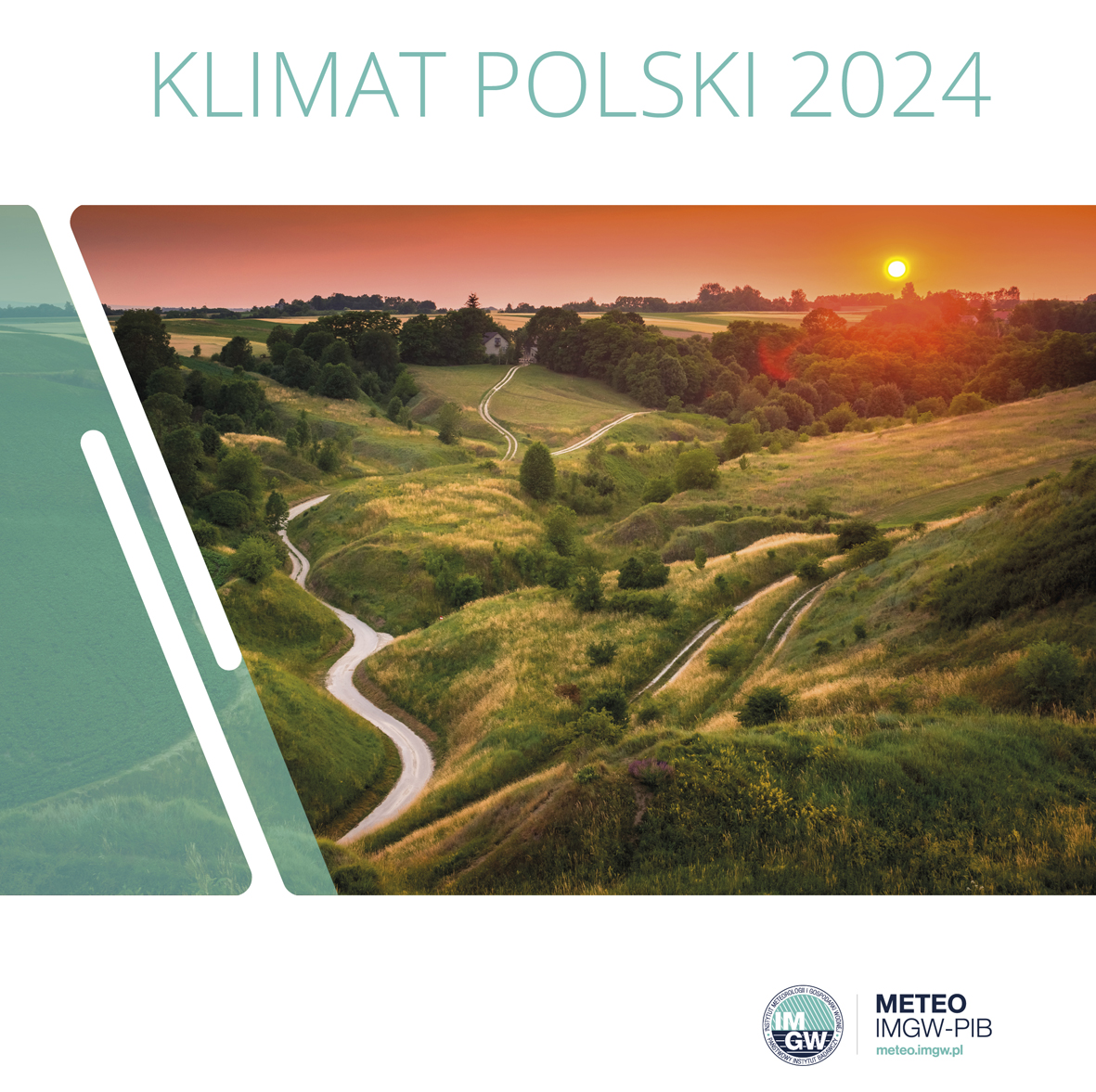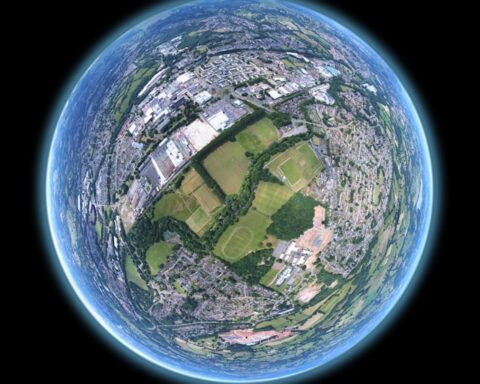In recent years, the number and scale of natural disasters caused by meteorological and hydrological phenomena have increased worldwide. In many cases, these events also trigger extremely dangerous disasters and industrial accidents. This type of overlapping hazards is known as cascading risk. Managing that risk is an essential element of planning and organizational solutions. As stakeholders of the ANYWHERE project, we had the opportunity to get acquainted with a tool that will significantly help respond correctly to hazardous situations for crisis management services and residents in at-risk areas.
AUTHOR: Tomasz Walczykiewicz, IMGW-PIB/Research and Development Centre, Department of Hydrology and Water Resources Engineering
There is a real cause-and-effect relationship between natural and technological disasters. Thus, under certain conditions, the so-called synergy effect may reinforce the negative consequences of these events. Nowadays, this type of disaster is becoming common in the world. Therefore, the multi-hazard nature of the risk should be considered when creating or modernizing the existing warning systems. Multi-hazard (or multi-hazard approach) is an approach that assumes that more than one hazard may occur in a given place, interacting with each other, with a cumulative effect and interactions.
As mentioned in the introduction, the hazards caused by natural factors – Natural Hazard Triggering Technological Disasters – have a special place in managing the risk of technological disasters, which significantly affect the condition and operation of critical infrastructure. Complex technical installations located in industrial facilities, such as reservoirs, chimneys, power supply stations, pumping stations, water treatment plants, or sewage treatment plants, are, depending on their location, susceptible to extreme weather phenomena, including heavy rainfall, floods, high and low temperatures or atmospheric lightning. If these phenomena trigger a sequence of successive events, then we are faced with cascading hazards.

Cause – effect. Case study from the USA
The Raritan River, the most significant stream in the state of New Jersey, USA, is an essential source of drinking water for the city and surrounding areas. In the river valley are the remains of an installation belonging to the American Cyanamid Company, which was closed in 1999. The plant, which covered an area of over 1.7 km2, distilled coal tar and produced various products, including pharmaceuticals, rubber chemicals, dyes, resins, and acids. In response to complaints from local people, by the 1970s, the company had made several improvements to its waste treatment system. Dye production ended in 1982, and the plant was placed on the National Priority List in 1983. Direct discharge into the Raritan River finished in 1985, and the company finally shut down in 1999.
It is estimated that 800,000 tonnes of chemical waste were buried at the site. The soil, groundwater, and landfill area are contaminated by volatile organic compounds, metals, and other harmful chemicals. This ticking ecological bomb was recalled by Hurricane Floyd in 1999, which caused property damage of over $6 billion and 57 lives lost. Record rainfall, reaching 359 mm, caused a failure of the water treatment plant located in Bridgewater Township on the Raritan River. At the same time, hazardous substances stored at the premises of the American Cyanamid Company entered the river. As a result, almost 500,000 people in several New Jersey counties had no access to drinking water for eight days. In August 2011, another hurricane, Irene, hit the New Jersey area, causing a chemical spill at the plant site again.
About the ANYWHERE PROJECT
Developing tools that help decision-makers coordinate real-time crisis management is crucial against the weather and climate challenges we face. These tools should use the latest measurement and observation technologies and be based on the best forecasting models. An example of such a solution is the ANYWHERE multi-hazard platform, which aims to better identify the expected weather-induced impacts with their location in time and space before they occur. The platform will enable rapid analysis and prediction of hazards, coordination of rescue operations in the field, and support the local population during a crisis.

ANYWHERE provides early warning products and local decision support services proactively targeting the needs and requirements of regional and local authorities as well as public and private operators of critical infrastructure and network. The developed solution was implemented and demonstrated at four selected pilot sites to validate the prototype. The next step is to use the tool in real conditions, with the support of a network of small and medium-sized enterprises (SMEs) and industry.
ANYWHERE (EnhANcing emergencY management and response to extreme WeatHER and climate Events (ANYWHERE) http://anywhere-h2020.eu/ was funded under the EU’s Horizon 2020 research and innovation program (EC-HORIZON2020-PR700099) and ended with summarizing workshop held in Brussels in October 2019.
Platform capabilities
ANYWHERE is based on the IBF (Impact Based Forecasting) concept, which is of particular interest to users of meteorological and hydrological products. The project developed prototype tools that use layers informing about possible losses depending on the type of hazard in impact forecasts. The dynamic interpretation of flood risk maps, developed in several of the presented applications, drew attention, among other things. It is also worth mentioning the application that helps prepare risk management plans for „self-protection”, the architecture of which is very similar to the solution developed under the ISOK project on the security of power grids in the event of meteorological hazards.

ANYWHERE’s final workshop featured a presentation of the project’s results, operational tools, and products. Learning more about the project’s products was possible behind the scenes. A poster session was also organized. The workshop also enabled an extensive discussion of the project’s results between external institutions, including project stakeholders and commercial partners, as well as other participants of the emergency response process, policymakers, and professionals in the disaster risk management sector.
For those interested in the subject of multi-hazard risk, we recommend extensive literature on the development of this discipline.
EPA, American Cyanamid superfund site reduces climate exposure, United States Environmental Protection Agency, https://www.epa.gov/arc-x/american-cyanamid-superfund-site-reduces-climate-exposure.
https://casedocuments.darrp.noaa.gov/northeast/am_cyanamid/pdf/Final_River_Restoration_Plan_Enviromental_Assessment_for_American_Cyanamid_Nov_2016.pdf.
Krausmann E., Girgin S., Necci A., 2019, Natural hazards impact on industry and critical infrastructure: Natech risk drivers and risk performance indicators, International Journal of Disaster Risk Reduction, 40, 101163, https://doi.org/10.1016/j.ijdrr.2019.101163.
Mukherjee S., Nateghi R., Hastak M., 2018, A multi-hazard approach to assess severe weather-induced major power outage risks in the U.S., Reliability Engineering & and System Safety, 175, 283-305, https://doi.org/10.1016/j.ress.2018.03.015.
NOAA, 2016, In-River Restoration Plan/Environmental Assessment (RP/EA) for the American Cyanamid Co. Superfund Site, Bridgwater Township, Somerset County, New Jersey.
NOAA, Storm Events Database, https://www.ncdc.noaa.gov/stormevents/eventdetails.jsp?id=5722837.
Pasch J.R., Kimberlain B.T., Stewart R.S., 2014, Preliminary Report Hurricane Floyd 7-17 September 1999, National Hurricane Centre, https://www.nhc.noaa.gov/data/tcr/AL081999_Floyd.pdf.
Pescaroli, G., Alexander D., 2018, Understanding compound, interconnected, interacting and cascading risks: a holistic framework, Risk Analysis. An International Journal, 38 (11), 2245-2257, https://doi.org/10.1111/risa.13128.
Showalter S.P., Myers F.M., 1994, Natural disasters in the United States as release agents of oil, chemicals, or radiological materials between 1980‐1989: analysis and recommendations, Risk Analysis. An International Journal, 14 (2), 169-182, https://doi.org/10.1111/j.1539-6924.1994.tb00042.x.
Zuccaro G., De Gregorio D., Leone F.M., 2018, Theoretical model for cascading effects analyses, International Journal for Disaster Risk Reduction, 30 (Part B),199-215, https://doi.org/10.1016/j.ijdrr.2018.04.019.
Main photo: Micah Williams | Unsplash
TOMASZ WALCZYKIEWICZ. Institute Professor at the Department of Hydrology and Water Resources Engineering at IMGW-PIB since 2000. A graduate of water engineering at the Cracow University of Technology. His research interests focus on the development and application of tools and methodologies supporting the implementation of integrated water resources management principles, water management development scenarios, the adaptation of water management to climate change, and water policy resulting from EU directives. In addition, he is also involved in risk analysis for natural and technological hazards and synergistic disasters.
